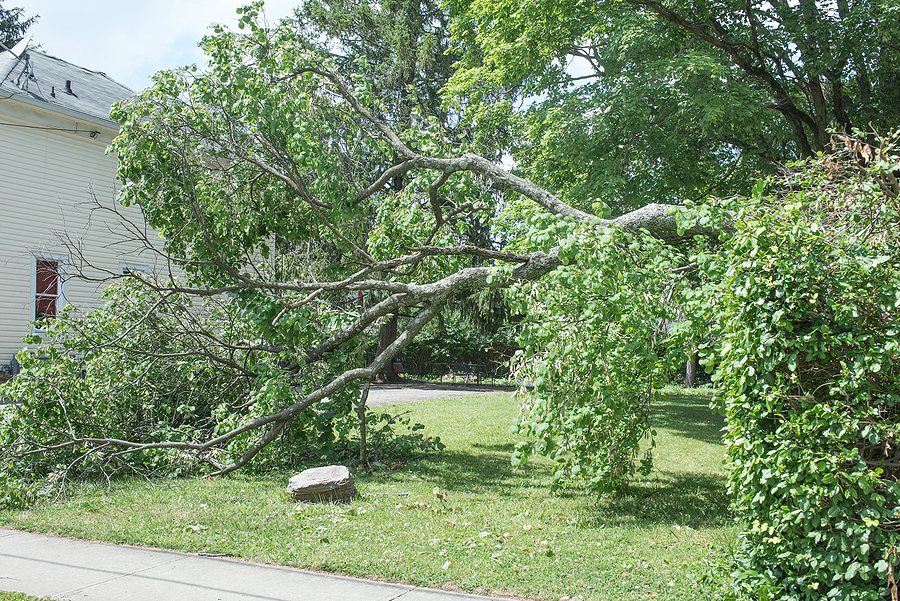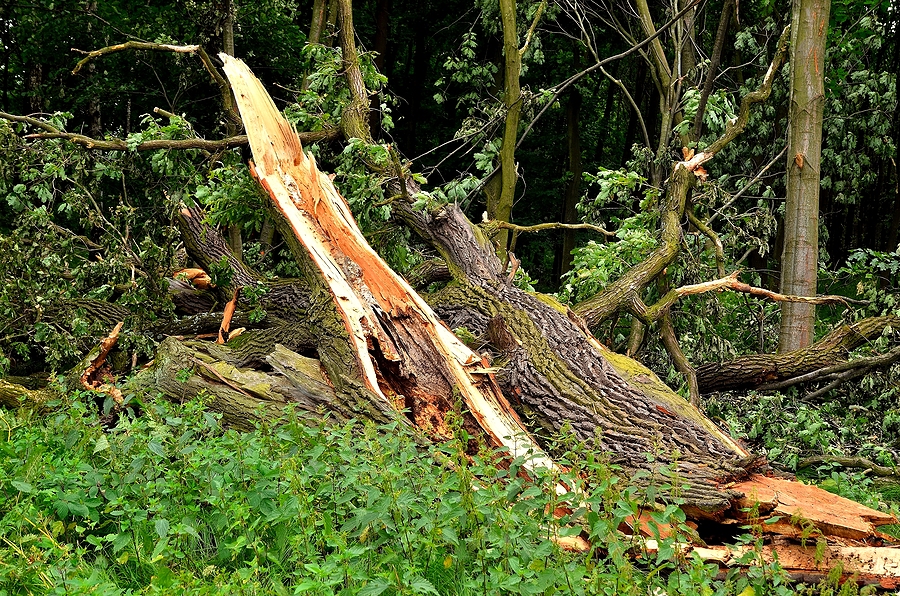Wind damage can be a serious threat to the health and longevity of your trees. Strong winds, especially in storm-prone areas, can break branches, uproot entire trees, and cause significant damage to your property.
But fear not, there are proactive steps you can take to shield your trees from these destructive forces. This blog will guide you through some key tree protection strategies, focusing on tree care practices and specific techniques like tree cabling and bracing. Let’s dive in and learn how you can fortify your trees against the might of the wind.

How Strong Winds Can Threaten Tree Health and Safety
Strong winds caused by windstorms can have serious consequences on the health and safety of trees. The destructive force of these winds can cause bark splitting, tree uprooting, broken branches, and other forms of bark damages that can impact the overall health of a tree. Even trees that are healthy and well-maintained can be threatened by strong winds, as the force can affect the root system and structural integrity of the tree. It’s important to take preventative measures such as trimming and pruning to ensure that trees are strong enough to withstand these powerful winds. As tree owners, we must be vigilant and take the necessary precautions to protect these valuable assets from the dangers of strong winds.
How to Protect Trees Against Harsh Winds and Storms
Pruning and Maintenance
The most effective way to protect your trees from wind damage is to ensure they are healthy and structurally sound. Regular pruning and maintenance are essential for keeping your trees in top condition, so make sure you keep up with this important task. Strategically removing dead wood, reducing crown size, and thinning out canopies will reduce the risk of wind damage.
If you have large trees near roads or buildings, it’s also a good idea to contact an ISA-certified arborist. They can help assess your tree’s condition and provide specific recommendations for improving its health and making it more resistant to strong winds.
Tree Cabling and Bracing
If pruning and maintenance are not enough to protect your trees from wind damage, you may need the assistance of more advanced techniques like tree cabling and bracing. These two methods use metal cables or rods to create extra support for branches or entire trees that are structurally weak due to age, size, decay, or other reasons. Cables provide tension between two branches, while braces connect a branch to the main trunk. Both are important for protecting trees from wind damage and helping them withstand high winds.
However, it’s important to remember that tree cabling and bracing should only be done by a professional arborist. Incorrectly installed cables or braces can actually do more harm than good, so be sure to hire an experienced certified tree service company to take on this task.
Wrapping Up
Taking steps to protect your trees from wind damage is essential for keeping them healthy and ensuring their longevity. Pruning and maintenance are the first line of defense, but if your tree requires a bit more support you may need to seek out specialized techniques like tree cabling and bracing. No matter which strategy you choose, be sure to contact an ISA-certified arborist who can provide professional advice based on your specific situation. With their help, you’ll have the peace of mind knowing that your trees are safe from strong winds and other severe weather conditions.
Were your landscaping trees hit by severe storms recently? Contact Timberland Tree Care at 317-348-0811 for licensed and insured storm damage tree service in Indianapolis, Indiana. We also provide full-service tree pruning and trimming, plus tree removal for both residential and commercial customers.
Related Posts:
How to Prevent Lightning Strikes to Landscaping Trees
Preparing Your Trees For Storms: What You Need To Know
Storm Damage Repair Solutions for Trees and Landscaping

